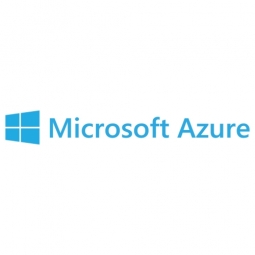Technology Category
- Application Infrastructure & Middleware - Data Exchange & Integration
- Application Infrastructure & Middleware - Middleware, SDKs & Libraries
Applicable Industries
- Automotive
- Glass
Applicable Functions
- Procurement
- Product Research & Development
Use Cases
- Building Automation & Control
- Tamper Detection
Services
- Cloud Planning, Design & Implementation Services
- System Integration
About The Customer
AGC Group is a major global glass manufacturer with a presence in Europe and Japan. The company, valued at $16 billion, has multiple business units worldwide and produces a wide range of glass products for commercial, residential, and industrial projects. AGC focuses on its core business of innovation in glass production and glass-related items to support the needs of building teams all over the world in achieving energy savings, safety, and stunning aesthetics. The company was looking to move away from managing its hardware on-premises and migrate to a scalable platform on Microsoft Azure to accelerate business growth in North America.
The Challenge
AGC Group, a global glass manufacturer, was seeking to transition from on-premises hardware to a cloud-based infrastructure on Microsoft Azure. The company aimed to improve cost efficiency and gain scalability benefits. Given AGC's presence in Europe and Japan, the migration to the cloud needed to be handled meticulously. The company was looking for a partner that could help with an on-time, on-budget infrastructure build. AGC also wanted to move away from managing its hardware on-premises and migrate to a scalable platform on Microsoft Azure. The company was seeking a partner who specialized in customized services to assist in hosting AGC’s landscape on Azure, which would allow AGC to accelerate business growth in North America.
The Solution
KochaSoft, a global cloud services organization specializing in optimizing SAP business technology, was chosen by AGC to assist in the migration. KochaSoft's eight-week SAP on Azure migration service helped AGC migrate their SAP workloads to Azure. During the migration period, KochaSoft successfully helped AGC navigate the complexities of migrating the VPN and AGC’s datacenters. KochaSoft also advised AGC on its integration with Azure Active Directory and mitigated challenges faced during the build period. Beyond migrating on-premises systems to Azure, KochaSoft tackled a wide range of work for AGC, including high-availability disaster recovery and building the landscape and backup solution. KochaSoft also built an integrated S/4HANA data warehouse using Azure SQL Data Warehouse and Azure Data Factory, helping AGC save 50 percent on its Azure licensing and implementation costs.
Operational Impact
Quantitative Benefit

Case Study missing?
Start adding your own!
Register with your work email and create a new case study profile for your business.
Related Case Studies.

Case Study
Integral Plant Maintenance
Mercedes-Benz and his partner GAZ chose Siemens to be its maintenance partner at a new engine plant in Yaroslavl, Russia. The new plant offers a capacity to manufacture diesel engines for the Russian market, for locally produced Sprinter Classic. In addition to engines for the local market, the Yaroslavl plant will also produce spare parts. Mercedes-Benz Russia and his partner needed a service partner in order to ensure the operation of these lines in a maintenance partnership arrangement. The challenges included coordinating the entire maintenance management operation, in particular inspections, corrective and predictive maintenance activities, and the optimizing spare parts management. Siemens developed a customized maintenance solution that includes all electronic and mechanical maintenance activities (Integral Plant Maintenance).

Case Study
Monitoring of Pressure Pumps in Automotive Industry
A large German/American producer of auto parts uses high-pressure pumps to deburr machined parts as a part of its production and quality check process. They decided to monitor these pumps to make sure they work properly and that they can see any indications leading to a potential failure before it affects their process.











